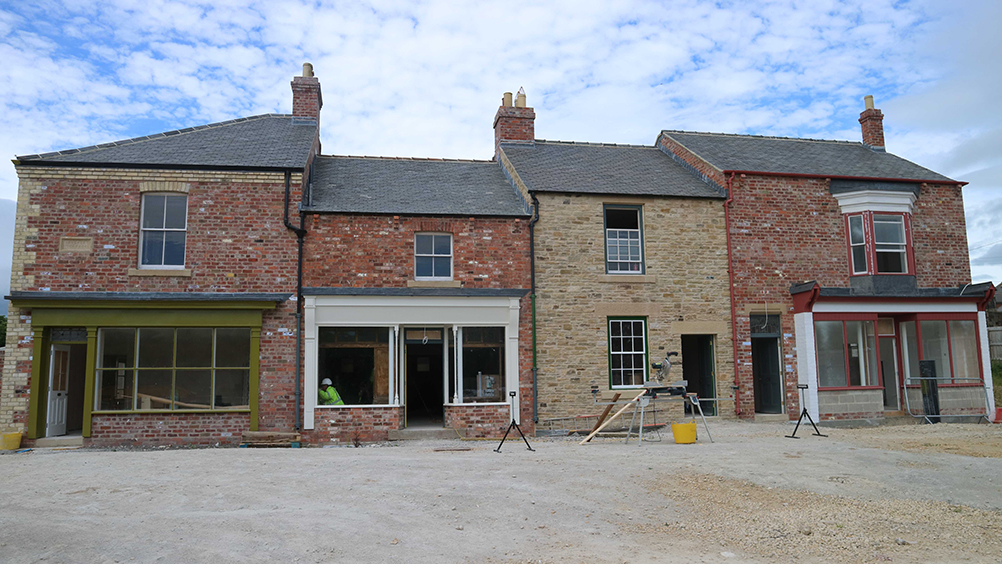Latest News
One of the Lads
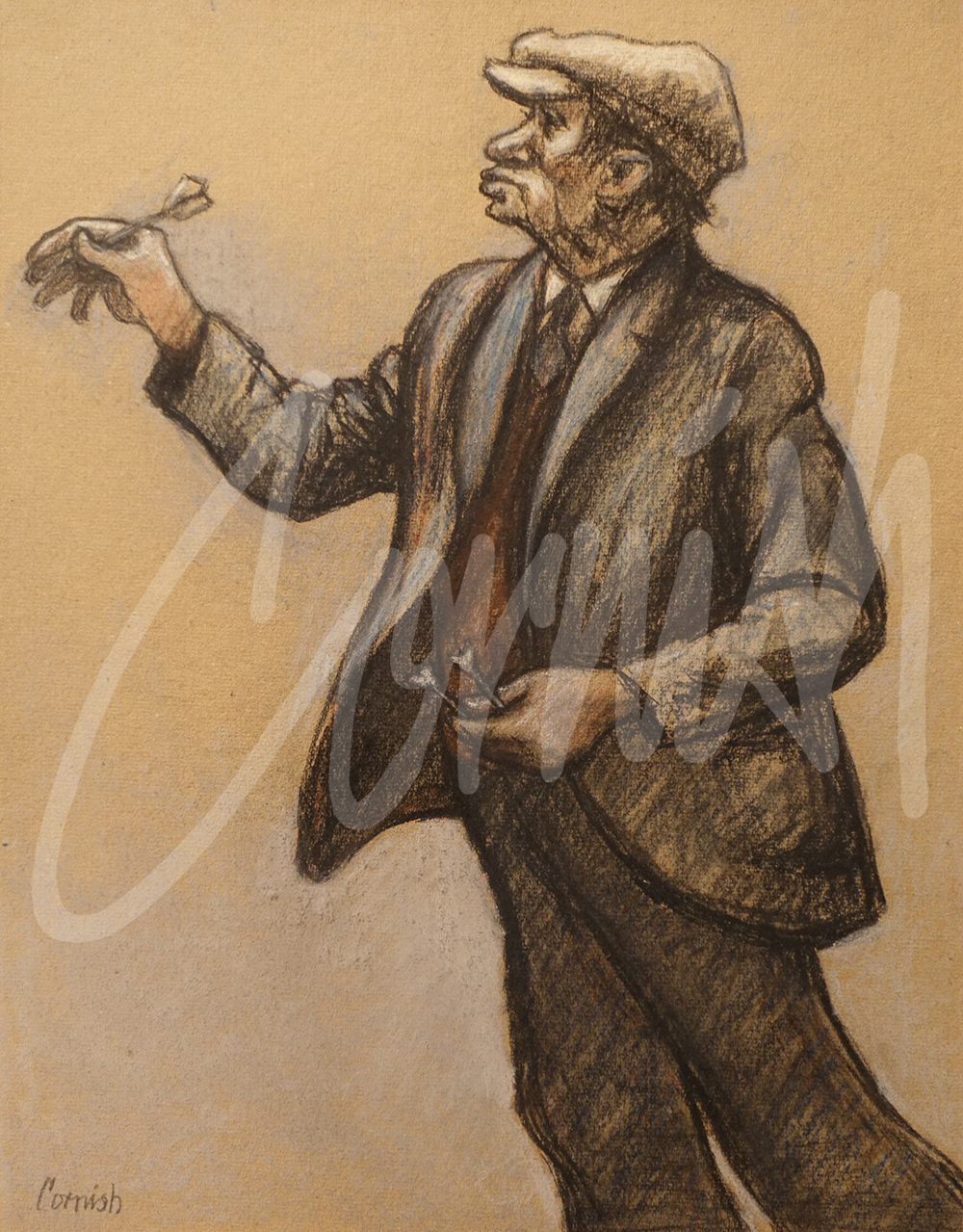
Cornish’s work is noted for the quality of his drawings, often made quickly to catch a moment in time. His jacket was adapted by his wife Sarah who created a ‘poachers pocket’ on the inside, large enough to hold his sketchbook and Flo-master pen so that wherever he went his sketchbook and pen were always with him. During his era there were over 35 pubs in Spennymoor and at times they were busy with men not only ‘enjoying the craic’ but often playing dominoes or darts, which were a common feature in all of the pubs in the region and beyond.
Cornish blended in, he was ‘one of the lads.’ A few hours earlier he would most likely have been working underground, and when he sat down in a pub with his favourite bottle of Newcastle Brown Ale he would immediately begin to observe and absorb whatever human interaction emerged unscripted. A treasure trove for an artist of his calibre and uncanny ability to quickly record what was happening all around him.
Cornish returned to the theme of the pub throughout his career. Bar scenes with individual character drawings, men playing dominoes, convivial conversations, and drawings of darts players. He also made detailed drawings of the beer pumps, furnishings, pint glasses and posters to ensure accuracy in his work. These features sometimes appear as individual component pictures because of their own special qualities and occasionally they are brought together in large composite paintings. Most of Cornish’s larger works involving many characters are constructed in this manner.
The large oil paintings such as The Crowded Bar, have carefully constructed compositions incorporating characters and details from his extensive collection of sketchbooks. These drawings enabled Cornish to create informal conversation pieces where a group of people appear to be interacting naturally.
The subject of Bar Scenes is covered in detail within ‘Behind The Scenes: The Norman Cornish Sketchbooks’, including a number of previously unseen preparatory drawings and sketches . Reference to this subject is also covered in two of the four essays by distinguished authors and historians Dr. Keith Wilson, Dr. Robert McManners and Gillian Wales (Cornish’s Biographers).
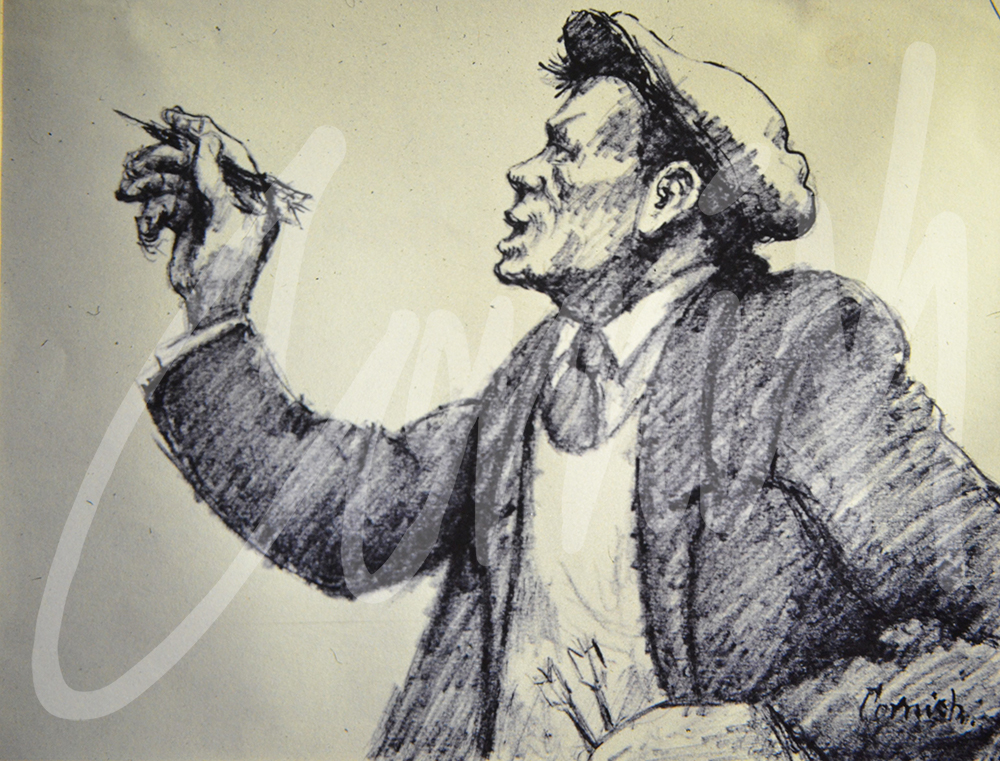
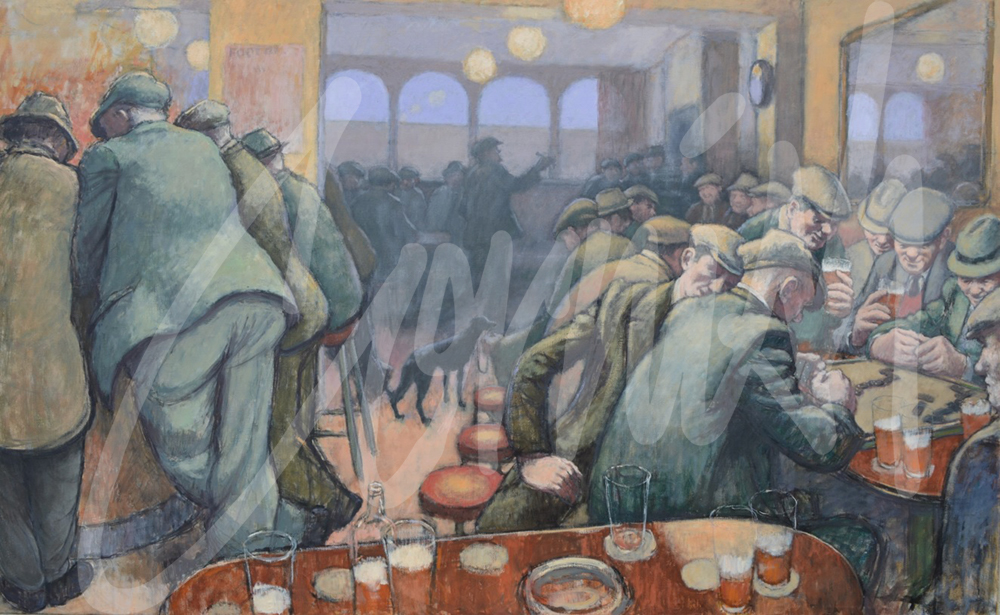
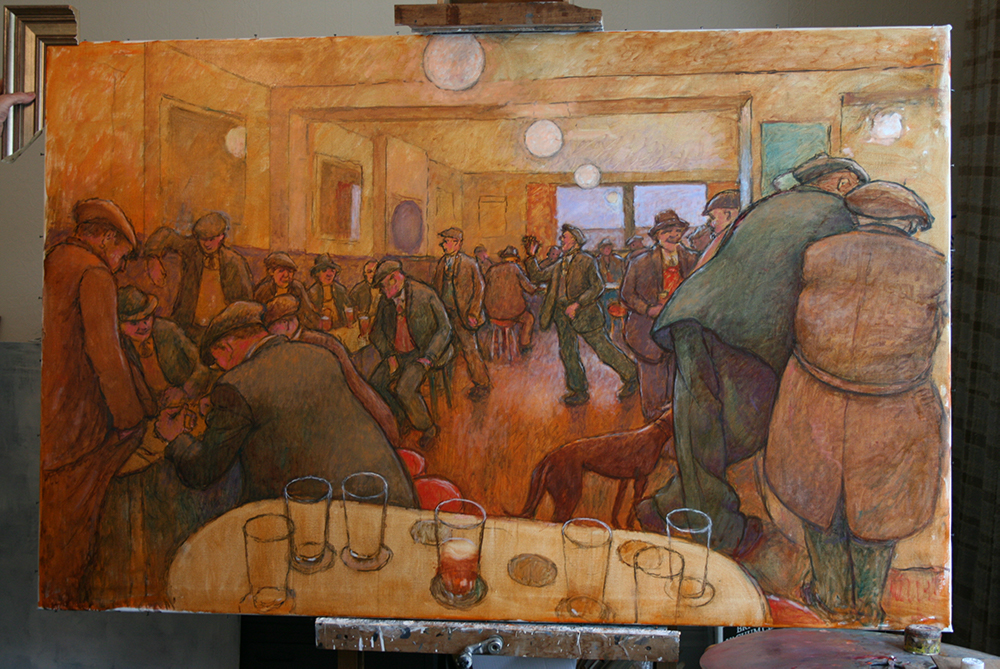
Mainsforth Colliery
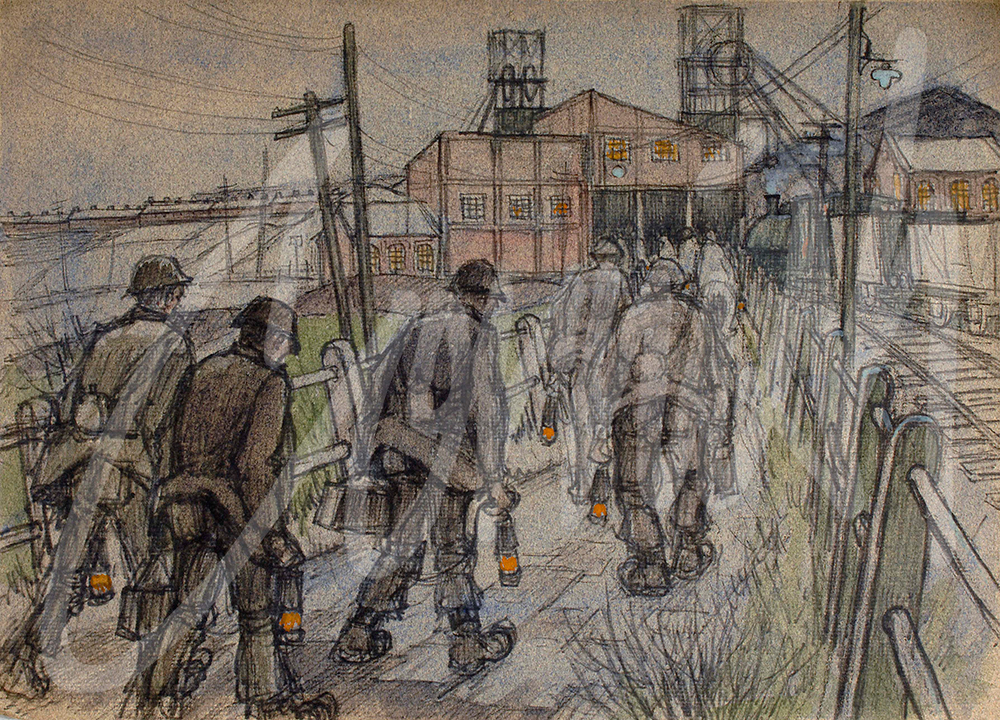
During the late 50s and early 60s coal reserves in the large deep coal mines in SW Durham were gradually becoming exhausted. Men were re-deployed to other collieries, retired or faced redundancy. In 1962 Cornish was transferred to Mainsforth Colliery adjacent to ‘The Station’, or Ferryhill Station to be precise. The Station was on the route of the main east coast line which swept through the Ferryhill Gap, between Ferryhill and West Cornforth, - known locally as ‘Doggie.’
This rare picture of Mainsforth Colliery also shows helmets being worn by the men as they walk towards ‘the pit’ and fence posts which are different to those seen typically along the pit road to Dean and Chapter Colliery.
One day, working at the coal face, Cornish was summoned to move quickly to the nearest underground telephone. His first thoughts were of a problem at home, but in fact it was a representative of Durham County Council calling to ask if he could be commissioned to ‘paint a Mural depicting life in County Durham.’ A daunting task which he later accepted.
Cornish was requested to meet the colliery manager who was unknown to him as a relatively new starter at Mainsforth Colliery. The following conversation has been extracted from Cornish’s autobiography: ‘A Slice of Life’ (1989) with Foreword by Melvyn Bragg.
Colliery Manager: “ So you fancy yourself as a bit of an artist, well, I’ve never heard of you”
NC : “ Well then, could you name me two British artists or sculptors of world-wide renown, who are still living and working in this country?”
Colliery Manager: heavy silence broken by “ No I can’t I’m afraid, but it’s not in my interest.”
NC: ”It had been in your interest enough to say that you hadn’t heard of me, but you hadn’t heard of any artists or sculptors. You ought to have got at last one sculptor.”
“Oh and who might that be?” he asked.
NC: “Henry Moore was the son of a colliery manager or senior official.”
Lost for words he finally shrugged his shoulders and said “Ah well, the moving finger writes.”
NC: “Can you finish the quotation?”
“No he replied. Can you?”
Cornish finished the quotation and added several other verses from The Rubaiyat of Omar Khayyam. Verse 51.
They eventually became more respectful and friendly towards each other. Cornish was granted leave of absence for one year without pay, to design and paint a mural depicting solidarity and brotherhood. The Miners’ Gala Mural now hangs in Bishop Auckland Town Hall and is accessible to view. It is a highly significant work of art which goes to the very heart and culture of mining communities in County Durham. The complete story of the Miners’ Gala Mural may be read at in our online news stories.
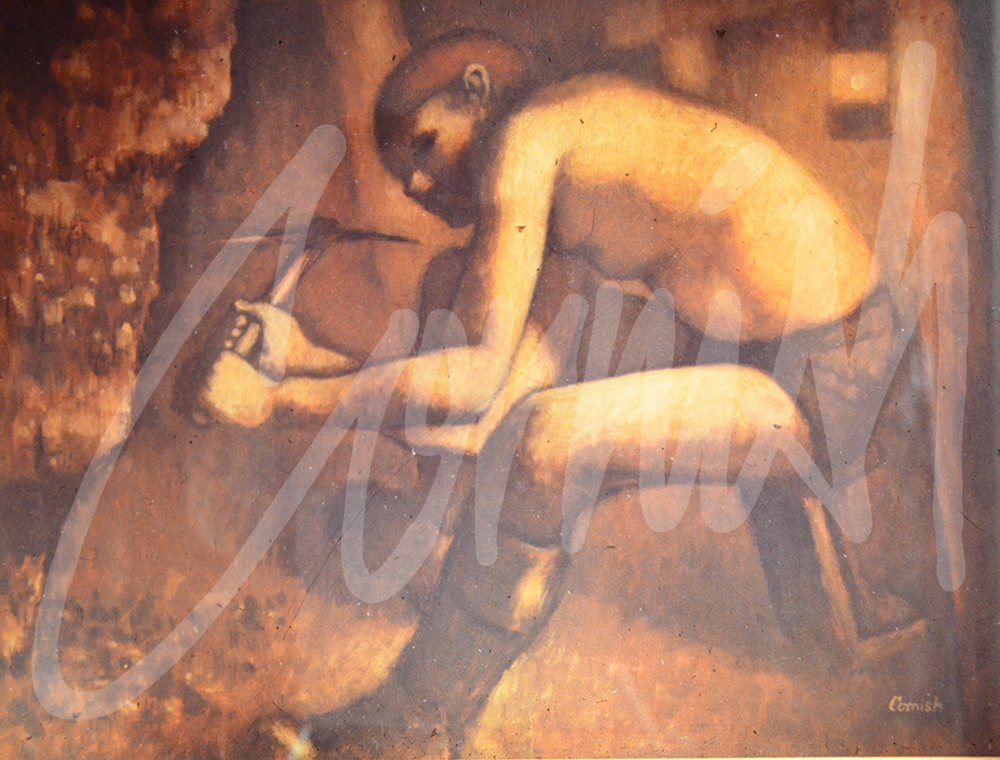
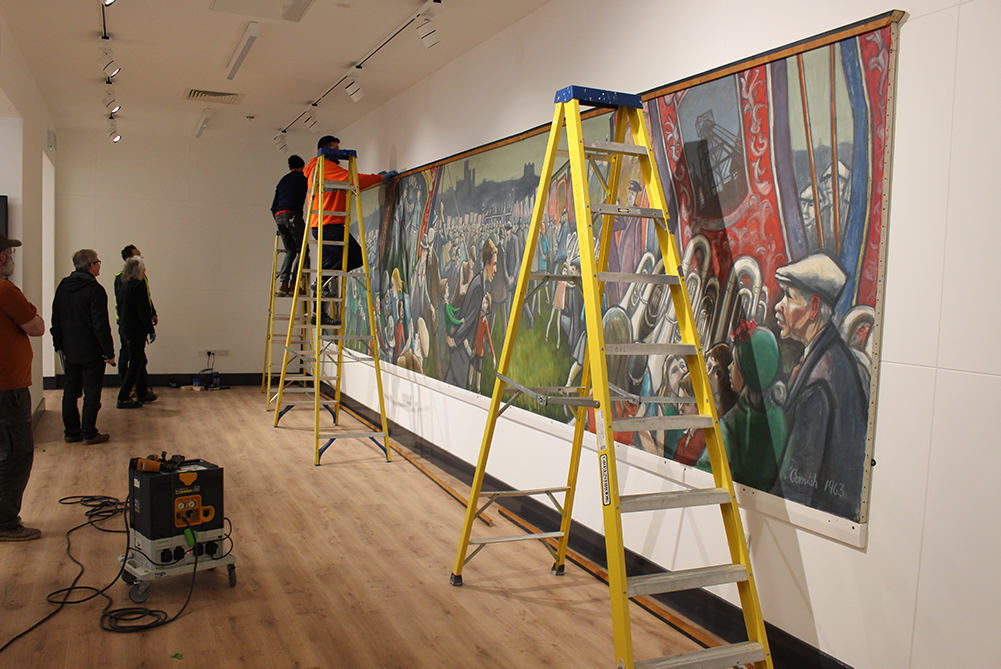
The Pit Road - from Bishop’s Close Street
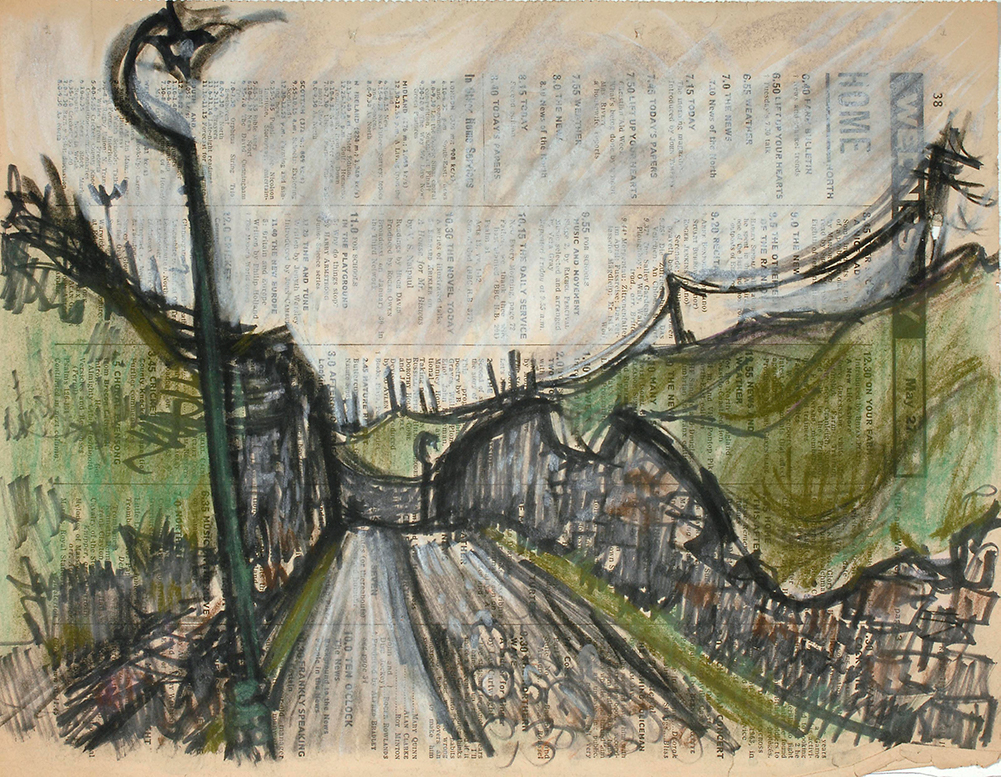
One of the most iconic images associated with Cornish’s work is the classic ‘Pit Road’. Often showing the final stages of the long walk to Dean and Chapter Colliery at all times of the night and day, as well as different times of the year. It was a journey of about three miles. It is no wonder that the daily experience left an indelible mark on his mind, and is represented so frequently in his work.
What is often overlooked is the start of the Pit Road which is featured today. Cornish would leave his front door at 33 Bishop’s Close Street, turn immediately left, and at the end of the row of houses the railway embankment forced the next left turn at the beginning of the Pit Road. The road (no vehicles), continued to the tunnel under the railway line, out of sight in the picture where the street lamp post looks much smaller. The early stage of the Pit Road then continued parallel with the railway line prior to veering off towards the Dean & Chapter Colliery. A detailed plan including images can be seen on pages 186 -187 in ‘Behind the Scenes; The Norman Cornish Sketchbooks’.
One other interesting feature of the picture is that the Flo-master Pen and watercolour is on a section from either The Radio Times or a newspaper; most likely the Radio Times. The word Home refers to the Home Service which was the popular channel during the 50s and 60s prior to the introduction of Radio 1, 2, 3 and 4 in 1967.
The picture also records a piece of local history which has disappeared. The journey along this road was undertaken by thousands of men walking to ‘the pit’ but it was also a short cut to Low Spennymoor where the factories were located. As the mines were closing men and women were beginning to work in the factories during a post war period of immense social change. The Dog Track was also in this area and very much a part of the cultural landscape, for the owners of Whippets and Greyhounds which feature in so many bar scenes.
The picture of the beginning of the Pit Road will be exhibited at the forthcoming exhibition
‘Norman Cornish: Behind the Scenes – Revealed,’ at Castlegate House Gallery, Cockermouth, Cumbria from September 18th to October 9th
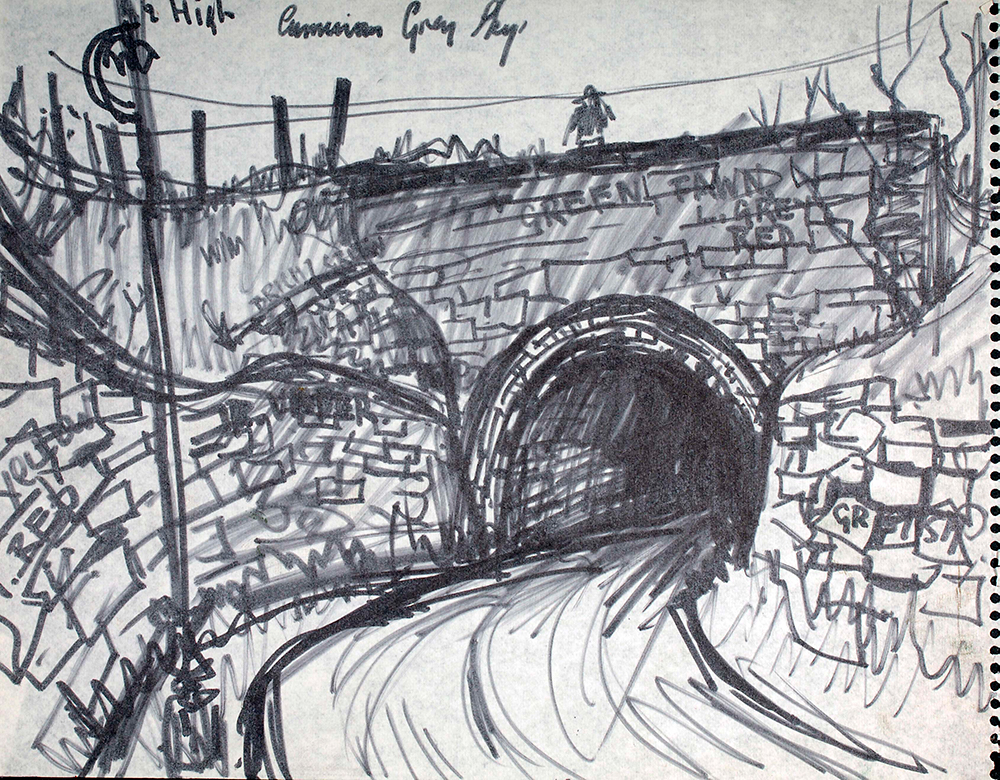
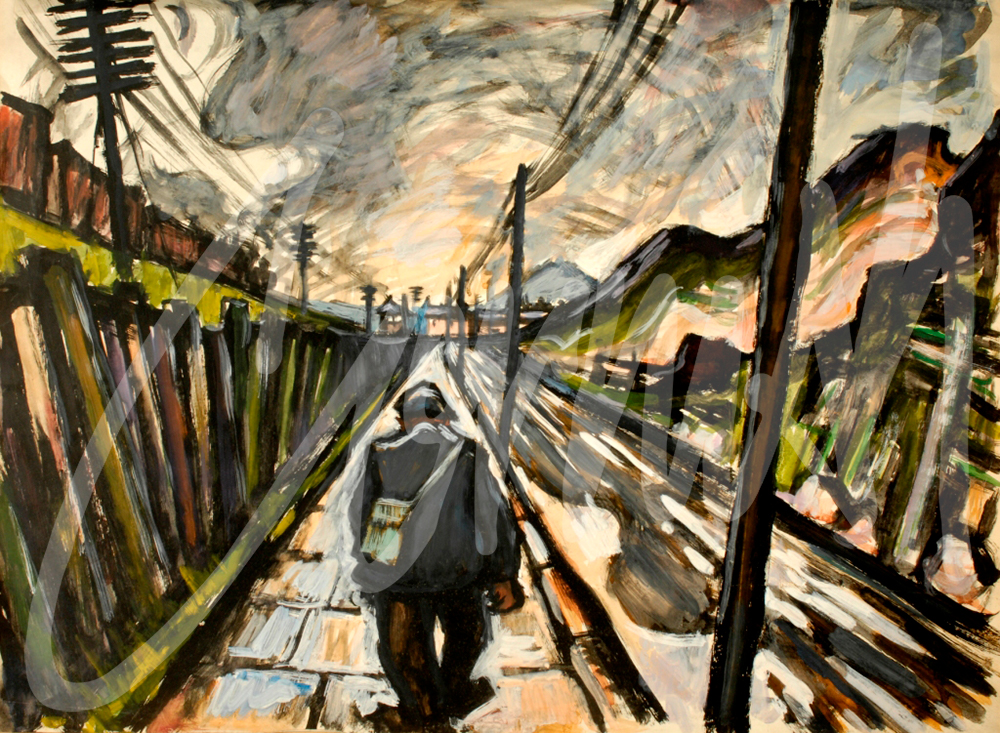
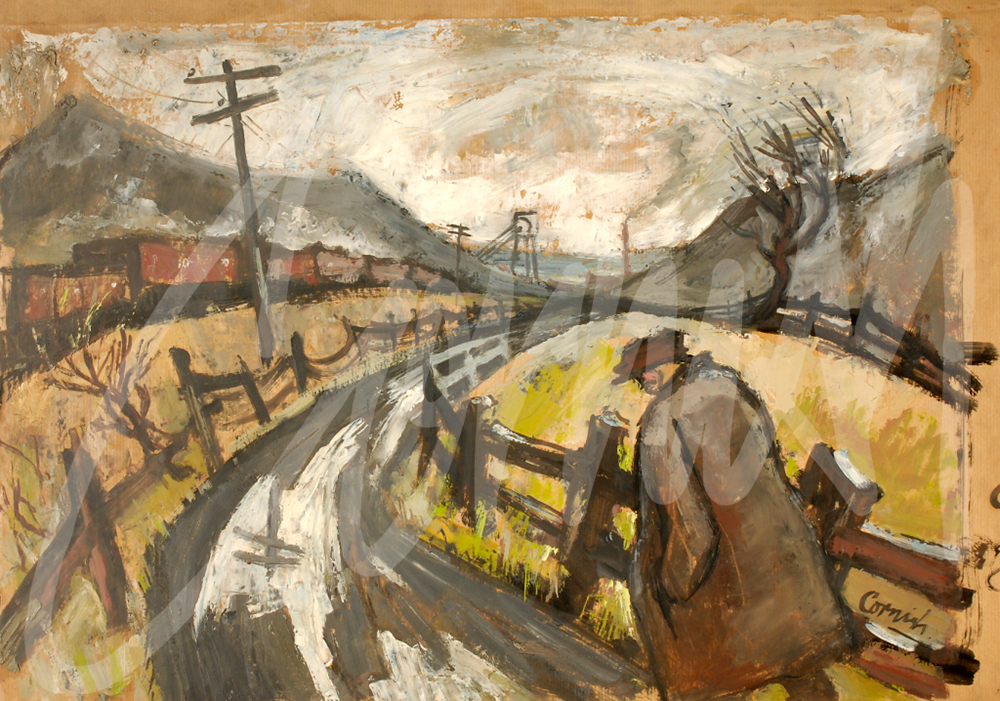
Beamish Museum: Part 2
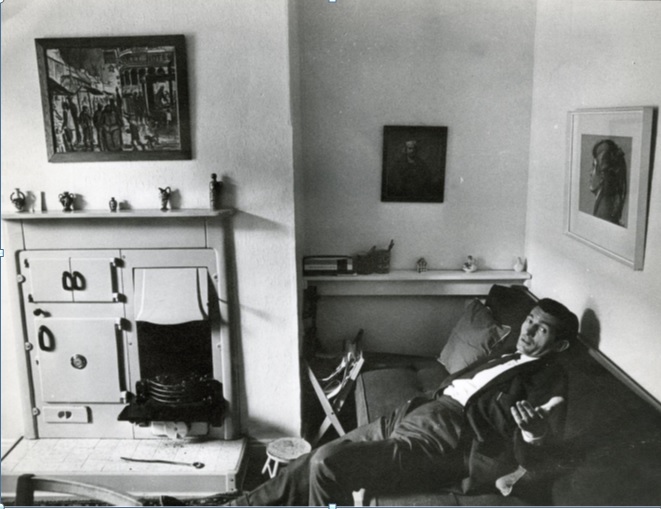
Number 2 Front Street will tell the story of The Spennymoor Settlement which was the cradle of creativity for aspiring artists, writers and poets during the 1930s. The story will be based around the family home of Norman Cornish, 33 Bishops Close Street where he lived from 1953 until 1967. Lisa Kaimenas, Project Officer-Community Participation, said “It’s a very typical National Coal Board house, as Norman was a hewer in the Dean and Chapter Colliery and his house was included as part of his wages.”
Norman and Sarah moved into 33 Bishop Close Street in May 1953 and lived there until he retired in 1966 due to a back condition. He became a full-time professional artist and the family moved to Whitworth Terrace where he was able to establish a studio to support his work. The studio is on long-term loan at Spennymoor Town Hall and many of the original contents from Bishops Close Street have been carefully maintained and prepared to be included when number 2 Front Street finally opens some time in 2022.
The exhibit will tell the story of Norman and his family, as well as life in the town, including the Spennymoor Settlement which he joined as soon as he was able on his 15th birthday. The Settlement was part of a wider national movement and nurtured the talent of artists Norman Cornish MBE, Tom McGuinness, Bob Heslop and Burt Dees. The author and playwright Sid Chaplin OBE, and newspaper journalist and editor Arnold Hadwin OBE were also active members of the Spennymoor Settlement.
Beamish Museum staff have worked very hard to ensure that as many places as possible will be accessible in the Cornish house and the upstairs, art space/studio space will be accessible by a lift acquired with support from the Banks Community Fund. To ensure as accurate representation as possible, the staff engaged in diligent searches for items to be included in the house. A recent example was provided by Shannon from the design team who managed to find a living room range (fireplace) as below. An additional image of Norman photographed in the actual living room is also below. Notice a portrait of Rembrandt in the corner! Just along the street will be the iconic Berriman’s Chip Van – hankies essential.
What a team at Beamish in all aspects of this amazing project.
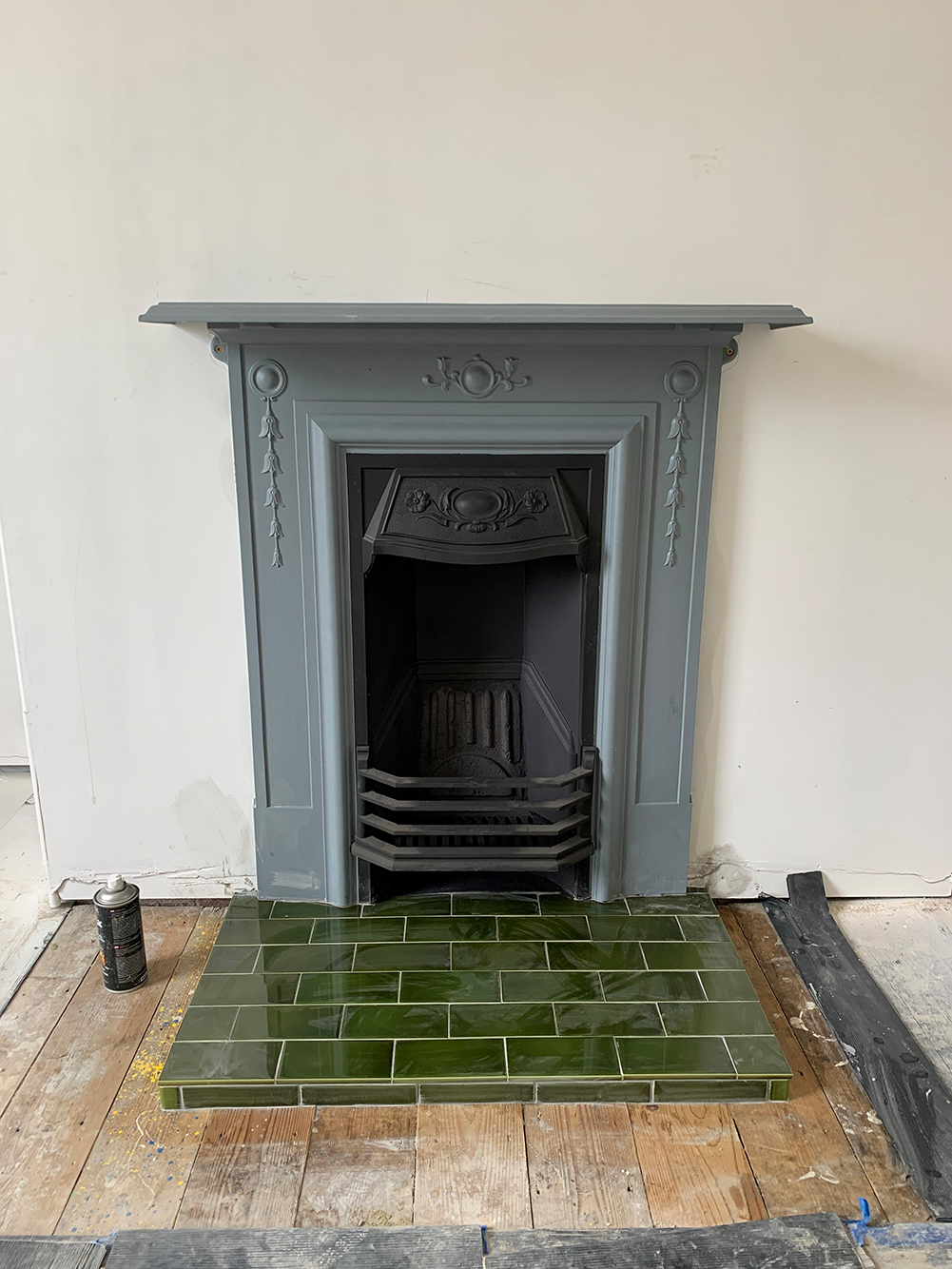

Beamish Museum Latest News Part 1
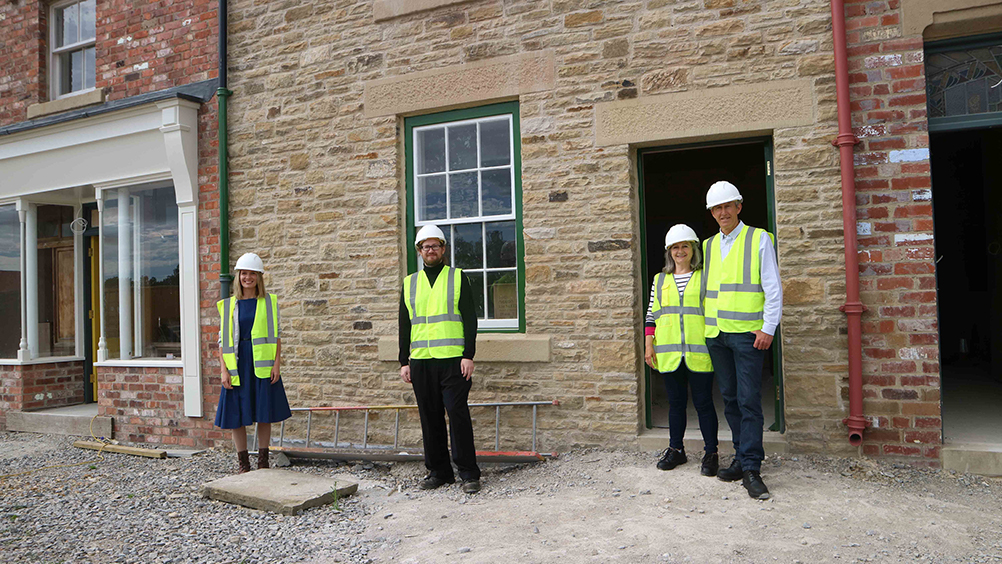
Some of our most popular posts have been the progress reports from staff at Beamish Museum regarding the development of the former Cornish family home from the 1950s and early 60s. The project to recreate 33 Bishops Close Street, with some minor adjustments, is within the overall re-making Beamish 1950s town project.
Progress has accelerated in the past few months and we are delighted to be able to share a virtual tour of the house created by Emmanuel Kaimenas and Beamish Museum. Start at the front door and visit each room by clicking on the link below.
To move forward click on the arrow, and to read key pieces of information, click on the information button to reveal the content.
We are indebted to all of the staff at Beamish Museum and individuals and organisations that have provided partnership support throughout the project. The project is about 33 Bishops Close Street but it is also ‘a slice of life’ for so many other people in the region and beyond, evoking memories of their own life and times.
Thankyou Beamish for keeping the spirit alive, and the memories as an inspiration to all of those who share an interest in the project.
To be continued …. next week: Part 2
